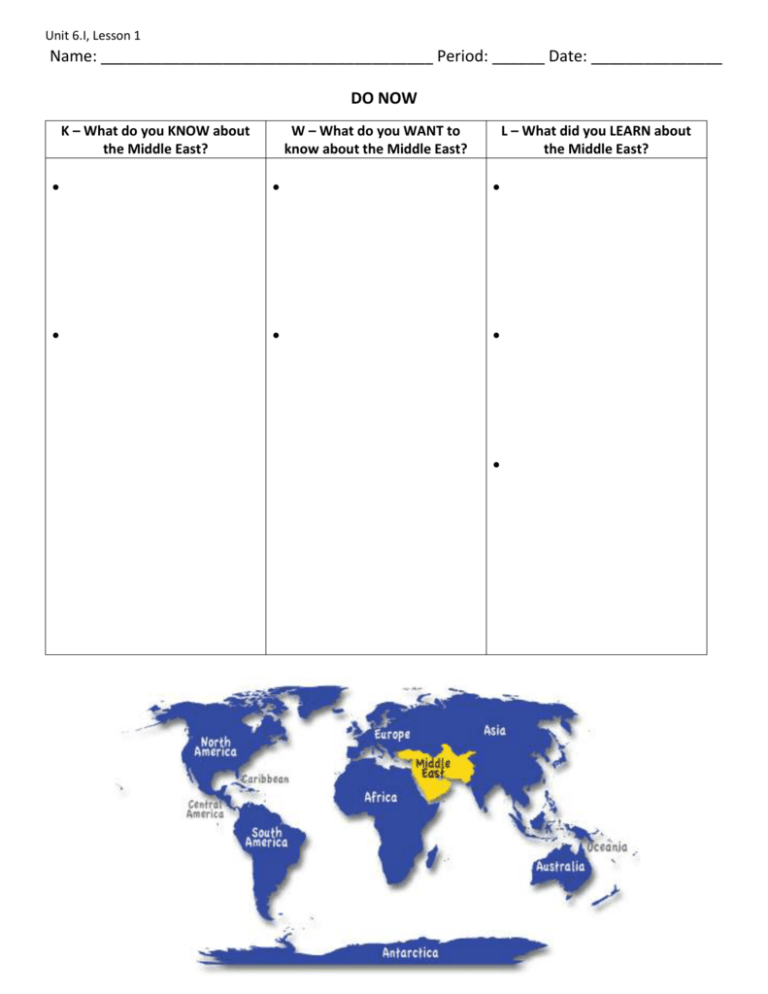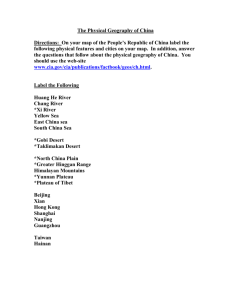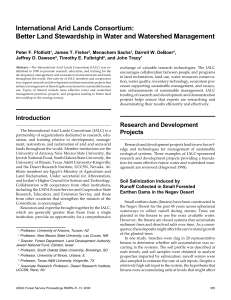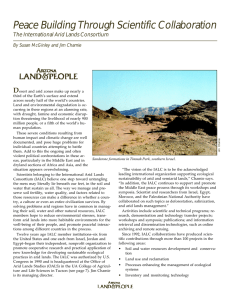Lesson 1 Guided Notes
advertisement

Unit 6.I, Lesson 1 Name: ______________________________________ Period: ______ Date: _______________ DO NOW K – What do you KNOW about the Middle East? W – What do you WANT to know about the Middle East? L – What did you LEARN about the Middle East? NOTES Unit 6.I, Lesson 1 NOTES The Middle East _______________________________________________________________ _____________________________________________________________________________ Label the map with the following: Turkey Iran Afghanistan Iraq Lebanon Syria Jordan Israel Egypt Saudi Arabia Yemen Oman Qatar Bahrain United Arab Emirates Kuwait Afghanistan Morocco Algeria Libya Tunisia Mediterranean Sea Red Sea Black Sea Persian Gulf Caspian Sea Indian Ocean Unit 6.I, Lesson 1 Examples of Physical Geography 1. The largest sand sea in the world is the Rub’ al-Khali, or Empty Quarter, in the southern part of the peninsula. The climate is so dray that there are no permanent human settlements. 2. The world’s largest known deposits of petroleum are in Southwest Asia. Most of them are concentrated around and under the Persian Gulf [and they] hold more than half the world’s known oil. These countries export most of their oil to industrialized countries. Petroleum revenues have brought tremendous wealth. 3. Nomadic herding is still important in this region. Nomadic herders move around to find food and water for their herds. Their camels, sheep, and goats graze on the wild grasses in one area. Then, when the grass is gone, the herders move their animals to fresh grazing area. Desert scrub covers the deserts in southern Israel and much of the Arabian Peninsula. The more arid parts of this peninsula are too dry to support much plant life. Much of the region is covered in desert scrub. In the spring, the desert grasses and shrubs bursts into bloom. Later on, the heat of summer dries them out. Examples of Human Geography How does the physical geography affect the human geography? Unit 6.I, Lesson 1 4. Despite the many seas in this area, the Middle East is a region of arid and semi-arid climate zones. Areas with an arid climate zone receive less than 10 inches of rain a year. But that is an average. An arid area may receive no rainfall for several years. Then large amounts of rain might fall in a few hours. Areas with a semiarid climate have some rain now and then. In some very dry areas, farmers have worked hard to make the most of their scarce water. Israel, for example, is more than half desert, yet it produces 95% of the food its people need. The farmers in this region have adapted irrigation techniques in order to make sure their crops get enough water. In addition, many of the crops they grow are plant types that do not need a lot of water, such as dates and cotton. 5. For the following paragraph, identify all of the human geography you find. Then, identify which aspects of physical geography from your reading influences them. Across the Middle East, daily life varies greatly. Some people live in cities, others in villages, and a few as nomads. In the past, people farmed, raised animals, and fished for a living. Today, more people live in urban areas and work in manufacturing, food processing, oil production, and construction.





